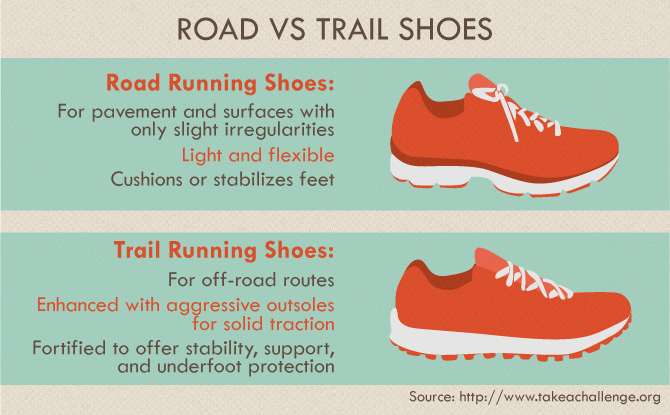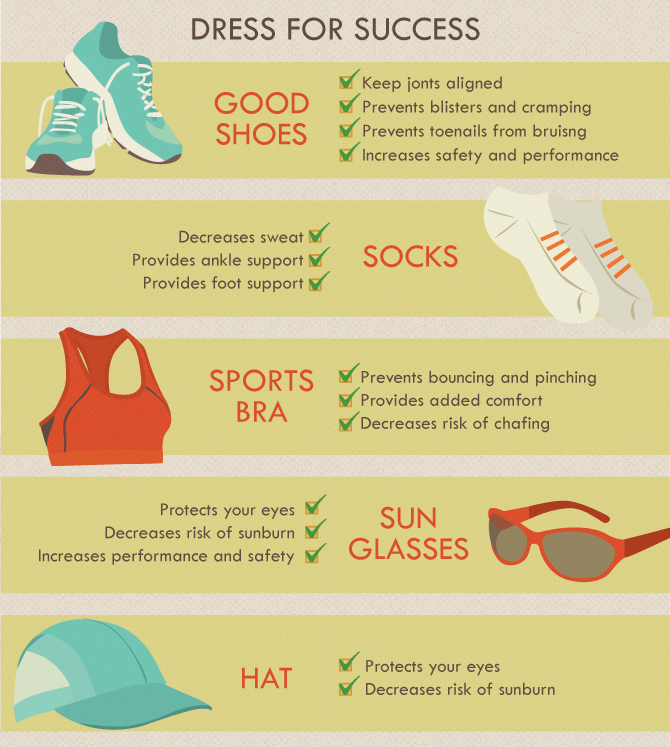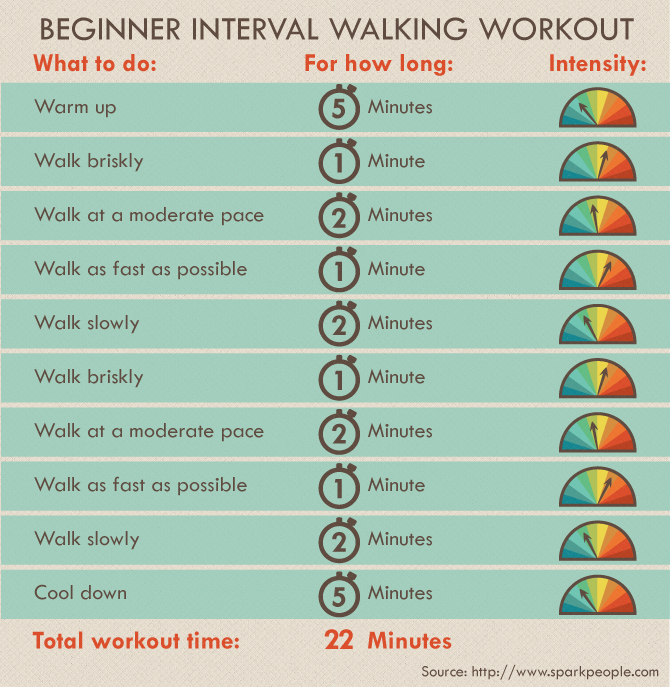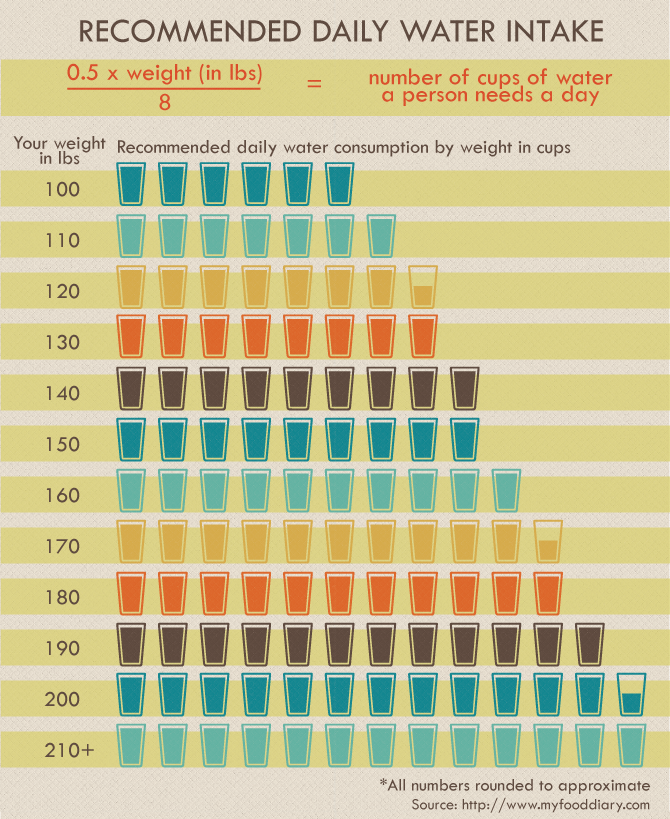Getting Started on a Happy, Healthy Running Career
Even if You’ve Never Run a Lap Before
I completed my first 5K in 2009. It was, as it turns out, the start of a running obsession
that would lead me to half a dozen (and counting!) half-marathons, triathlons,
adventure races, and more. But back when I laced up and nervously took off
at that first 5K, it felt like a major accomplishment.
And it was! Just a year before, I’d been an overworked,
under-rested, exercise-phobic woman approaching her 30s
and not feeling all that great about herself. I decided
to see how far I could run, figuring I could make it at
least a couple of miles. I did almost everything wrong:
I wore sneakers I’d bought at a discount store, an old
raggedy sports bra that gave me no support,
and I went out hard and fast with a belly full of junk food.
As you can probably guess, it did not go well.
I made it about a half-mile before I pulled up short,
heaving and on the verge of being sick. It was awful.
It was humbling. And it was a crossroads: would I go
home and grab another spoonful of peanut butter
right out of the jar, or would I start over with a new plan?
I started over. And what I learned may help you avoid the same crash-and-burn I experienced on Day One.
Get the Right Gear
You don’t have to break the bank (although in my experience, spending a little
more for quality products is well worth it), but make sure you get a proper shoe fitting
at a good running store.
The employee should measure each foot (one may be bigger than the other!),
talk to you about your planned weekly mileage, determine whether you’ll be
running on the roads, trails, or a mix, and perhaps even let you run in
several models of shoe to see your gait and arch formation.

Don’t Make Your Purchase Based on Looks
I know it’s tempting to get the cool blue-and-yellow
shoes with racing stripes, but making a choice solely (pun!)
on fit is much more important. Fit is so crucial not just for running form,
but injury prevention. Shoes that are too big may cause you to roll an ankle
or may distort the way your foot hits the running surface. Shoes that are too
small may give you blisters, bruise your toenails or cause cramping. And
depending on how you roll your foot as it hits the ground, your shoes may be
able to help you keep your joints aligned for better and safer performance.
Proper Sweat-Wicking Socks
Blisters are no fun: they
can keep you off the road for weeks! So find socks that are specifically tailored
to wick away sweat, give you proper ankle and foot support and work well with the
type of shoe you run in (you probably wouldn’t want super-thick socks in a minimalist
or zero drop shoe, for example).
A Sturdy Sports Bra (if necessary) This may be the
most important investment a female runner makes–regardless of chest size! Find a bra
that supports your breasts and keeps the bouncing to a minimum, while not compressing
or pinching anything and causing discomfort. And watch out for fabric: cotton or non-wicking
fabrics can cause painful chafing.
A Hat
When you run, you sweat. When you sweat, it can be hard to see. So find a hat that can block the rays, preventing
sunburn and sweat on your forehead, and look especially for something with wicking material,
ventilation and some reflective material.
Sunglasses
Finally, Sunglasses to Protect Your Eyes and Skin from the sun. Whether it’s sun or snow that has you squinting on a run, a good pair of sunglasses
can protect your eyes from the elements. But find a pair that fits your face so you’re not getting
pinched or chafed by something that’s too big or small for your nose.

Set Realistic and SAFE Expectations
Don’t be like me! Don’t set out to run five miles if you haven’t logged a
single mile since the fourth-grade timed-mile run. Start with a manageable
distance (say, one or two miles) and don’t try to race. Take a
comfortable jog that raises your heart rate enough to get the
blood moving and loosens up your muscles but doesn’t max you out.
Not only will you build your endurance and cardiovascular fitness,
you’ll build up your confidence!
Choose the Right Style
Even the world’s best runners don’t always run.
They train using run/walk intervals, or slow/fast intervals.
You can start out with a three-minute run/one-minute walk, or
perhaps a one-minute run/one-minute walk. Log your workouts
and keep notes about how you felt after each run was complete.
When they start to get easier, increase the time you run and
decrease the time you walk. Interval training is great when starting out!

Fuel for Performance
Each person’s hydration needs vary, but you want to make sure
you’ve given your body what it needs to perform. Think of water
and food as fuel for your running goals. Depending on your size,
you need to consume a set amount of water each day. Essentially,
you need about half an ounce of fluid for every pound you weigh.
There are a couple ways to calculate your recommended intake,
but a simple way is to take your weight in pounds, and multiply that
by 0.5. Then, take that number and divide it by 8 in order to see how
much that is in cups.
For example, if you weigh 160lbs, 160 x 0.5 ÷ 8 = 10 cups
Therefore you should drink about 10 cups of water a day.
Cupcakes and soda right before you lace up probably won’t sit as
well as a piece of toast with peanut butter and a big glass of water.
It’s not just about what you eat, but how your body responds to it. So
start tracking how you feel during your runs and if you bonk,
take a closer look at what you ate in the hours before you started.

Give Yourself a Goal
It’s easy to quit when there’s no incentive to keep going.
You’ll have bad days (they come with the territory!) but when
people know you’re working towards a goal, or they’re counting
on you for their own training, you’re less likely to give up.
Pick a race–a 5K, or a fun run–and register. Perhaps pick something
that raises money for charity, and be a part of that project.
Use your sweat for good, and then when you feel like sleeping in,
you’ll be able to use your goals as motivation to get moving.
(As with any exercise program, make sure you get medical clearance! I am not a doctor or personal trainer. I am an AFAA-certified group fitness instructor, but I can’t legally and won’t ethically give specific medical advice, so please make sure you get the go-ahead from a physician. If you have cardiac concerns, diabetes, high blood pressure, are pregnant, or have joint or muscle problems, make sure you talk to a professional about whether running is appropriate for you, with or without modifications.)
Embed the article on your site

